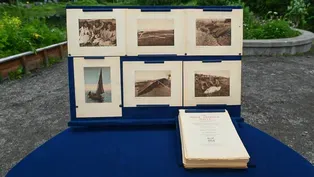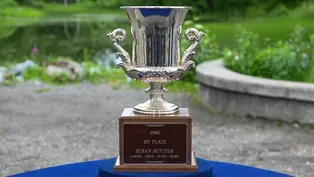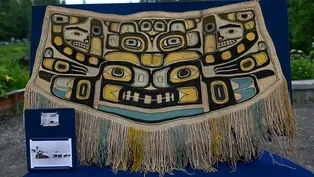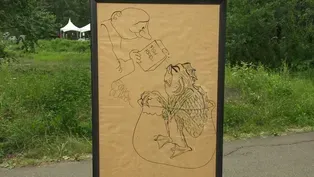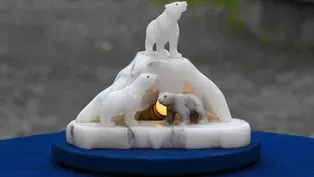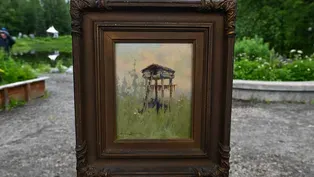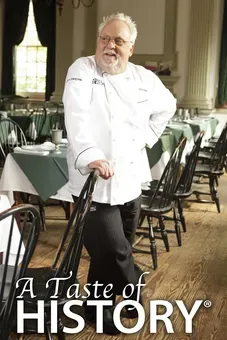
Appraisal: English Bass Violin, ca. 1790
Clip: Season 28 Episode 1 | 3m 6sVideo has Closed Captions
Appraisal: English Bass Violin, ca. 1790
In Alaska Native Heritage Center, Hour 1, Claire Givens appraises an English bass violin from 1790.
Problems with Closed Captions? Closed Captioning Feedback
Problems with Closed Captions? Closed Captioning Feedback
Funding for ANTIQUES ROADSHOW is provided by Ancestry and American Cruise Lines. Additional funding is provided by public television viewers.

Appraisal: English Bass Violin, ca. 1790
Clip: Season 28 Episode 1 | 3m 6sVideo has Closed Captions
In Alaska Native Heritage Center, Hour 1, Claire Givens appraises an English bass violin from 1790.
Problems with Closed Captions? Closed Captioning Feedback
How to Watch Antiques Roadshow
Antiques Roadshow is available to stream on pbs.org and the free PBS App, available on iPhone, Apple TV, Android TV, Android smartphones, Amazon Fire TV, Amazon Fire Tablet, Roku, Samsung Smart TV, and Vizio.
Buy Now
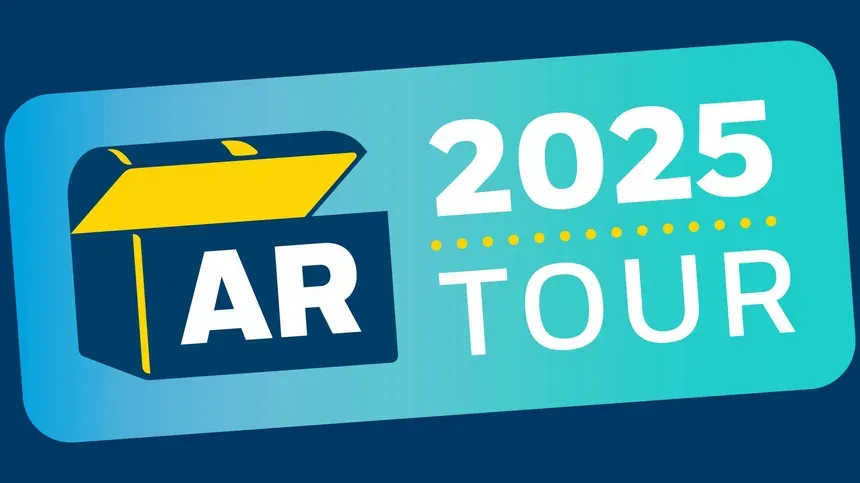
ANTIQUES ROADSHOW 2025 Tour!
Enter now for a chance to win free tickets to ANTIQUES ROADSHOW's 2025 Tour! Plus, see which cities we're headed to!Providing Support for PBS.org
Learn Moreabout PBS online sponsorshipAPPRAISER: I'm so glad you brought this instrument in today.
I didn't think I would ever have a chance to see one.
It's a little bit like bumping into a woolly mammoth, to tell you the truth.
GUEST: (laughs) Five generations back in our family, they were in Nottingham, England, and this was a handmade violoncello, they called it.
APPRAISER: Mm-hmm.
GUEST: And he played it in the Church of England.
They decided to emigrate to America, to Milan, Michigan, is where they ended up.
And before they left, they had an auction, and on that list is the violoncello.
Apparently, it didn't sell, so they brought it along with them, and it's been in our family ever since.
When I moved to Alaska in 1994, I brought it with me, not sure what else to do with it, and we've had it here ever since.
APPRAISER: So, you're right, it's very similar to a cello, violoncello.
And it, I saw that auction listing, and indeed, it was referred to as a violoncelli, but it's, actually, it's a bass violin.
Now, in the history of musical instruments, bass violins are no longer made, they're no longer played, and they are part of the whole evolution of the violin family, of the bowed instrument family.
They're extinct.
And they were used a lot for playing in churches because they were loud and they could be heard.
And one of the attributes of, uh, instruments that are called bass violins is that the width of the ribs, from, from here to here, it's extremely narrow.
It's about a, a half or two-thirds what you would expect in a cello.
So from the front, it looks totally standard, and then you look at it from the side, and it looks like it's shrunk a little bit, and that's for projection.
So the back is closer to the belly, and the sound comes out, and with much more force.
GUEST: Ah.
APPRAISER: And so that would be perfect for a big, huge church, wouldn't it?
GUEST: Yes-- oh, my goodness.
APPRAISER: They were used up till the 1830s, 1840s, but they were mostly made in the late, uh, 1700s.
So this would be an instrument from the 1780s or 1790s.
It's in remarkably fine condition for being so old.
We will never know who made it.
One of the unusual things about it is that the belly is made out of mahogany.
Well, I think if you've looked at any violin, viola, or cello, you will see that the top is made of spruce, and so this is mahogany.
But what's good about mahogany?
The worms don't like it.
GUEST: (chuckles) APPRAISER: So it's not a particularly resonant wood, but it was made to be preserved.
It's a very cool instrument.
I think that, in the w, marketplace today, it's not that it has so much value, but it is rare and it's interesting, and your family has preserved it all these years, so bravo.
I would value it at, at a price that would reflect what a cello, a basic cello would be worth today, and that's about $1,500 to $2,000.
GUEST: Oh, my goodness.
APPRAISER: In the retail market, yeah.
GUEST: Uh-huh.
Okay, well, we mostly wanted to know about it, and that's exactly what you've shared.
Appraisal: 1907 Currier Co. Buffalo Bill Lithograph
Video has Closed Captions
Appraisal: 1907 Currier Co. Buffalo Bill Lithograph (3m 49s)
Appraisal: 1927 'The Jazz Singer' Vitaphone Sample Disc
Video has Closed Captions
Appraisal: 1927 'The Jazz Singer' Vitaphone Sample Disc (3m 23s)
Appraisal: 1929 & 1941 Matanuska Colony Manuscript Maps
Video has Closed Captions
Appraisal: 1929 & 1941 Matanuska Colony Manuscript Maps (3m 48s)
Appraisal: 1930 Edward Curtis 'The North American Indian'
Video has Closed Captions
Appraisal: 1930 Edward Curtis 'The North American Indian' Vol. 20 (4m 28s)
Appraisal: 1964 Magnus Colcord Heurlin Oil
Video has Closed Captions
Appraisal: 1964 Magnus Colcord Heurlin Oil (3m 11s)
Appraisal: 1969 Rolex Oyster Cosmograph
Video has Closed Captions
Appraisal: 1969 Rolex Oyster Cosmograph (2m 51s)
Appraisal: 1990 Susan Butcher Iditarod Trophy
Video has Closed Captions
Appraisal: 1990 Susan Butcher Iditarod Trophy (4m 28s)
Appraisal: Bippart, Griscom & Osborn Pendant Brooch
Video has Closed Captions
Appraisal: Bippart, Griscom & Osborn Pendant Brooch, ca. 1890 (1m 3s)
Appraisal: Chilkat Blanket, ca. 1910
Video has Closed Captions
Appraisal: Chilkat Blanket, ca. 1910 (2m 54s)
Appraisal: Gahan Wilson Creature Drawing, ca. 1972
Video has Closed Captions
Appraisal: Gahan Wilson Creature Drawing, ca. 1972 (2m 26s)
Appraisal: Hans Wegner GE240 'Cigar' Chair, ca. 1955
Video has Closed Captions
Appraisal: Hans Wegner GE240 'Cigar' Chair, ca. 1955 (3m 34s)
Appraisal: Italian Art Deco Alabaster Polar Bear Lamp
Video has Closed Captions
Appraisal: Italian Art Deco Alabaster Polar Bear Lamp, ca. 1925 (2m 31s)
Appraisal: Sydney Laurence Indian Fish Cache Oil, ca. 1922
Video has Closed Captions
Appraisal: Sydney Laurence Indian Fish Cache Oil, ca. 1922 (4m 10s)
Providing Support for PBS.org
Learn Moreabout PBS online sponsorshipSupport for PBS provided by:
Funding for ANTIQUES ROADSHOW is provided by Ancestry and American Cruise Lines. Additional funding is provided by public television viewers.





